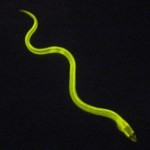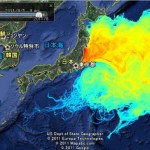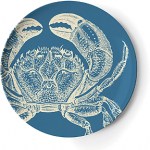sushi
It is sad that most sushi lovers will never have real wasabi. I had assumed that I had sampled real wasabi when I spent several days eating sushi morning noon and night in Actual Japan. But even then, there is a good chance I never tasted the stuff.
The reason that most "wasabi" is fake, and the agronomy and chemistry of wasabi, turn out to be really interesting.
Here is the background info references in the video.
Image source: AKIKO KUMAGAI & ATSUSHI MIYAWAKI as posted in Scientific American
Dr. Miyawaki from the RIKEN Brain Science Institute in Wako, Japan and colleagues have identified the first example of a muscle protein in Japanese freshwater eels (Anguilla japonica) that fluoresces under special circumstances that may lead to improved medical testing (photo above). The researchers have isolated the protein they named UnaG (after "unagi", the term for freshwater eel in Japanese). What is unique about this protein is that it fluoresces under low oxygen conditions and when it binds to…
One of the interesting items we have this week is a study by Greenpeace in which various organisms from the sea near Fukushima were sampled for radioactive isotopes. Let's take a closer look.
The data in the table provided (see the first item in Ana's feed for the link) show the amount of radiation (radioactive decay) by isotope type per kilogram of plant or animal tissue from various samples. On the higher end is a fish with 357 bq/kg of radiation and some seaweed with 190 bk/kg.
What does this mean? Hard to say. I can tell you this: A normal human has about 4,000 or more bq (in total…
"Christie! Christie!" My four-year old cousin tugs eagerly on my jacket. "I wanna see the fishes."
Mouse (on the left) and Tuna (on the right),
my two adorable cousins
"Ok, Tuna, we can go see the fish."
My little cousin loves the word 'tuna'. She says it all the time. Tuna, tuna, tuna. Everything is a tuna-face or a tuna-head. She doesn't even like tuna (she doesn't eat it), but she loves the sound of the word rolling off her tongue. Finally, her nanny threatened that if she kept saying 'tuna,' we'd have to start calling her it. My ever so adorable cousin's response was, of course, "TUNA!"…
Lately, I've been seeing a lot of dinnerware that's just too fascinating to cover with food. Like Hiroshi Tsunoda's Bodylicious plates, available at DesignCode. According to Street Anatomy, Tsunoda was
inspired by Nyotaimori, a tradition where food is presented on a naked woman's body and used as a tray. Nyotaimori is also referred to as body sushi, and requires the person to practice laying for hours without moving.
Wow, I'm not sure what to say. But at least the plates are equal opportunity: there's a Bodylicious Y set too!
Moving from Homo sapiens to marine invertebrates, these…
Microbiologist develop some strange habits when it comes to food.
Some take a fatalistic approach. They reason that microbes are everywhere, we're going to die anyway, we might as well eat dirt and make antibodies. You know these people. They quote things like the "10 second rule" when food drops on the floor, tell you we're all getting asthma because we're too obsessed with cleanliness, and let their dogs wash their dishes.
Eeew.
With a few possible exceptions, I'm in the other camp.
I'm the one who freaks out if the cover is left off the salad dressing during dinner. I brush my…



